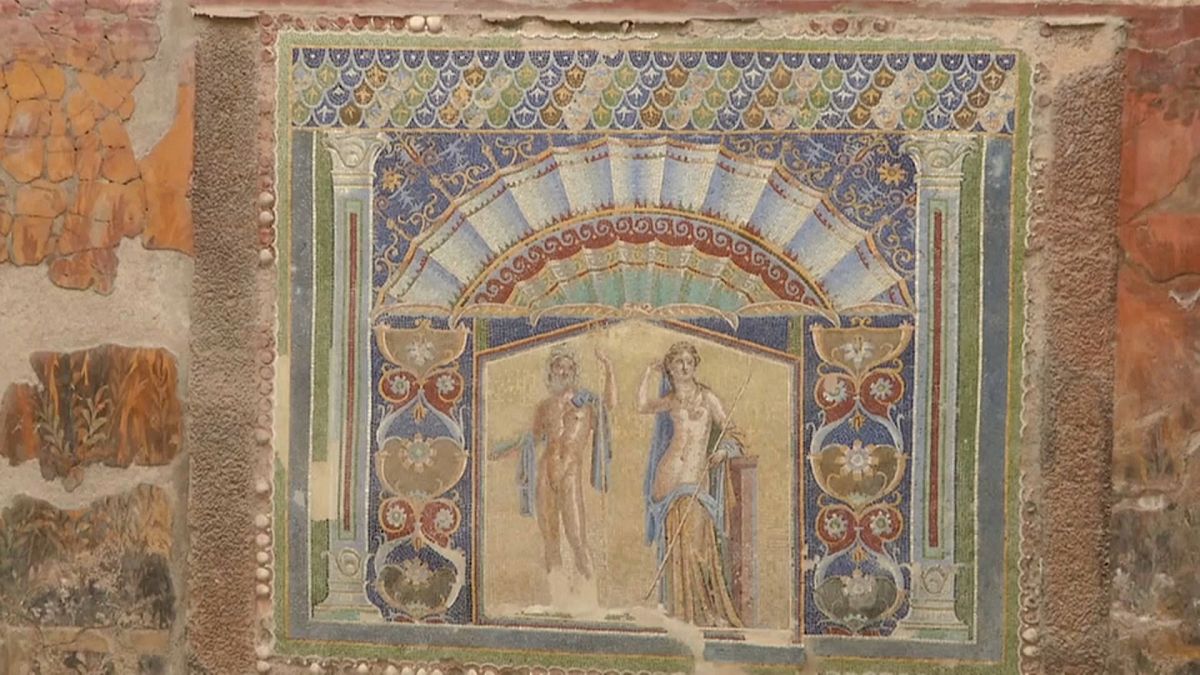Pompeii wasn't the only Roman city to be engulfed by the eruption of Mount Vesuvius. Herculaneum was buried even deeper than its neighbour so its secrets are just beginning to be revealed.
When Mount Vesuvius erupted on 24 August, 79 AD, Pompeii wasn't the only Roman city to be engulfed. Herculaneum was buried even deeper than its more famous neighbour, so its secrets are just beginning to be revealed.
One of the town's most celebrated and opulent villas, perfectly preserved by the volcanic ash, has opened to the public.
The House of the Bicentenary – so named because it was discovered in 1938, 200 years after the first excavations of the ancient city – was a Roman house of around 600 square metres, belonging to a noble family and decorated with wall paintings showing mythical figures.
The Mount Vesuvius eruption of 79 AD is considered one of the most catastrophic natural events to have occurred in ancient times. According to historical reports by Pliny the Younger, the tragedy unfolded over just a handful of hours.
A huge cloud of gas and rocks erupted from Mount Vesuvius, reaching 14 kilometres in height and moving southwards. The pyroclastic materials reached a temperature of 400 degrees Celsius. Rocks and ash were set off at a speed of 80 kilometres (50 miles) per hour, burning everything and anyone in its path.
The eruption covered Pompeii with a layer of ash and pebbles with a maximum depth of ten metres. Herculaneum was shrouded by a much thicker blanket of volcanic material with a depth ranging from 15 metres to 25 metres.
Experts say many Herculaneum inhabitants tried to escape death by fleeing to the shoreline, but without success. The victims took with them goods and objects of value in the hope they would provide a new life for their families after the tragedy. The ruins are a silent witness to death, frozen in time.
